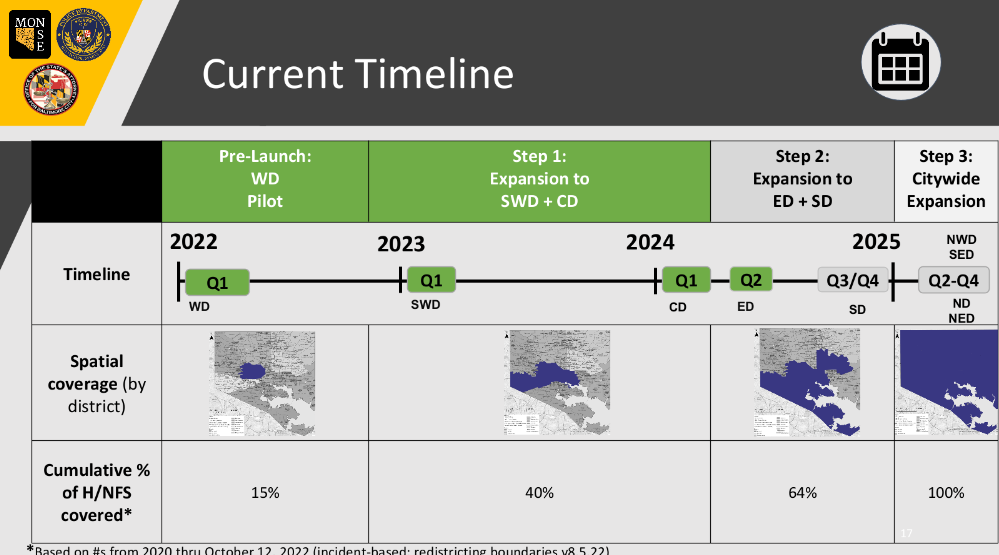Mayor Scott Announces GVRS Expansion to Fourth District
Group Violence Reduction Strategy Now Active in BPD’s Eastern District
 BALTIMORE, MD (Monday, April 22, 2024) - Today, Mayor Brandon M. Scott officially announced the expansion of Baltimore’s Group Violence Reduction Strategy (GVRS) into the Baltimore Police Department’s (BPD) Eastern District. Expansion took effect on April 15, 2024.
“The success of GVRS is changing lives and making our neighborhoods safer every single day,” said Mayor Brandon M. Scott. “Focused deterrence strategies have failed in two previous attempts in Baltimore because the necessary commitment from city leaders, resources for implementation, and services for participants working to step away from a life of violence weren’t available. This time around we’ve changed that equation, and with the necessary services and accountability in place, this strategy is making our communities safer. We’ve taken significant care to ensure we are expanding in sustainable ways, that ensures the strategy maintains its effectiveness. I am proud to announce that as of last week we officially expanded GVRS into the Eastern District and are continuing to maintain our momentum so that communities across Baltimore can benefit from this focused deterrence strategy.”
GVRS was first piloted in BPD’s Western District in January 2022 before it was expanded to the Southwestern District in January 2023 and Central District in January 2024. The implementation of the focused deterrence strategy in the Eastern District fulfills the February 8, 2024 commitment made by Mayor Scott to complete expansion in the fourth GVRS District by the beginning of Q2 2024.
The strategy relies on the tri-party partnership of the Mayor’s Office, BPD, and State’s Attorney’s Office, with the Mayor’s Office of Neighborhood Safety and Engagement (MONSE) leading day-to-day project management and interagency accountability.
The approach facilitates direct, sustained engagement with a small number of group-involved individuals who are the most likely to be the victim or perpetrator of violence. All shootings and homicides that occur in districts where GVRS is active are reviewed, wherein individuals at the highest risk of violence, victimization, and retaliation are identified as prospective participants. From these identifications, eligible individuals are offered services to help them step away from behaviors associated with violence and are provided a clear mandate from community moral voice partners – residents and faith leaders who leverage their credibility to reach and intervene with people at the highest risk – to put down the guns or face swift, certain, and legitimate accountability through the criminal justice system. MONSE holds weekly Coordination Meetings to plan for the provision of services and ensure effective partnership around the strategies anti-violence goals.
The GVRS Western District pilot resulted in a significant decline in homicides and non-fatal shootings in Baltimore’s most historically violent district within the first year of implementation. An external analysis by researchers at the University of Pennsylvania’s Crime and Justice Policy Lab of the first 18 months of GVRS implementation in the Western District found that GVRS was associated with a 25% reduction in homicides and nonfatal shootings, as well as a 33% decrease in car jackings, with no commensurate increase in arrests or displacement of crime to other districts.
Importantly, more than two years after initiation of the Western District pilot, the strategy is continuing to maintain this early progress and connect identified individuals to life-changing services where possible. Between January 2022 and April 15, 2024, 158 individuals identified as being at the highest risk of involvement in gun violence have received life-changing services through Youth Advocate Programs (YAP) and Roca across the Western, Southwestern and Central BPD Districts.
MONSE closely monitors participant outcomes over time, in partnership with life coaches at YAP and Roca. While the strategy identifies and intervenes with the individuals most likely to be a victim or perpetrator of gun violence, GVRS has continued to see strong trajectories for participants over time. Since initial implementation in January 2022, 96.7% of participants have not recidivated and 95% of participants have not been revictimized. This underscores that individuals engaged by the strategy are finding success in stepping away from violence and being provided the necessary resources to ensure sustainability.
“I’m proud of the work this collaborative has been doing since launching GVRS in January 2022, and our team is committed to expanding this lifesaving, transformative strategy across Baltimore,” said MONSE Director Stefanie Mavronis. “This is the power of implementing a strategy that doesn’t solely rely on law enforcement but rather leverages resources, accountability, and the voice of the community to deliver an anti-violence mandate directly to those most at-risk of being involved in violence — either as a victim or shooter.”
GVRS relies on strong partnerships between MONSE, BPD, the State’s Attorney’s Office, service providers YAP and Roca, and Baltimoreans, along with federal, state and local government partners, including DPSCS, the Office of the Attorney General, Baltimore School Police, DJS, ATF, DEA, FBI.
“Through our partnership with Mayor Scott, MONSE, the State’s Attorney’s Office and our community partners, we continue to show our commitment to the Group Violence Reduction Strategy,” said Police Commissioner Richard Worley. “I am pleased to say that this proven success has made it possible to expand GVRS into the Eastern District and I remain optimistic as we continue to scale up and across Baltimore.”
To ensure quality implementation of GVRS across districts, the Scott Administration and technical advisors are measuring minimum capacity benchmarks for each of the Strategy’s four main components: violence reviews, direct communications, intensive life coaching, and strategic enforcement.
########

|